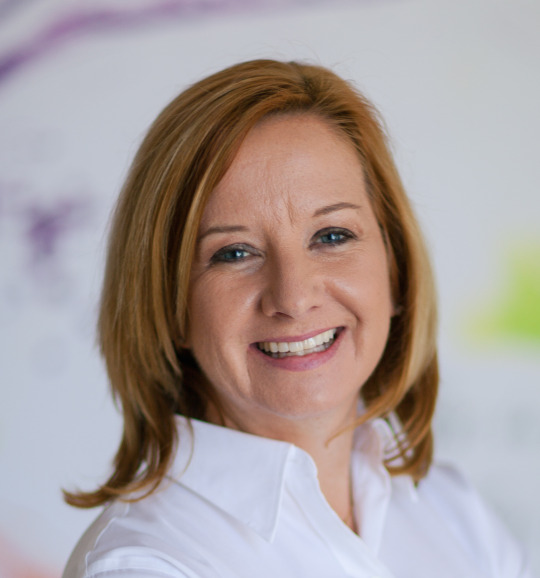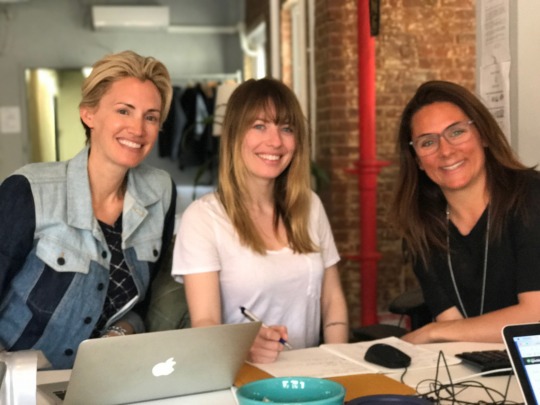
We recently posted a project for Equinox that broke the record for most pitches ever. The response was so extraordinary that Equinox wound up hiring not one, but two Second Shift members as secret shoppers. We are now partnering with the company to roll this program out to other Equinox locations across the country. Yay!
What makes this particular project even sweeter is that the client is former Second Shift member Shirley Romig. As part two of our #PitchToWin campaign Shirley generously offered to discuss what made the following two pitches stand out and, equally importantly, to share what influenced her final decision between the two candidates.
Shirley: First of all, it was almost impossible to pick because there were just so many amazing women! But, it came down to some key words, key experiences and the general tone of the pitch. With that, I narrowed my search down to four people that I reached out to and spoke with over the phone. Ultimately two members impressed me the most in our phone interview.
Second Shift: Below are the pitches you received from two of our members – it would be fantastic if you could tell us what made their pitches stand out?
Member A
I’m a digital marketing executive with 20+ years of experience developing strategic brand-building initiatives, leveraging traditional brand marketing disciplines and leveraging digital/social media platforms to drive consideration and conversion for companies like Kraft, American Express, Starwood Hotels and Time Inc. I’ve worked on member focused rewards programs at American Express and Starwood. Both programs have mystery shopping as a feedback mechanism for the brand. I’m well versed in delivering feedback based on brand goals as well as high quality customer and member experiences.
What makes me the right fit for the opportunity? I have experience in the hospitality industry, therefore I have an intimate understanding of what makes an exceptional customer experience. I’m incredibly passionate about health and wellness. I’ve been a member of various gyms and visit boutique fitness clubs, so I can give an assessment of how Equinox stacks up to other fitness options in the city. I have implemented data focused CRM strategies in email, online, on the phone and in apps. I know how to tailor messages based on a customer need. I could quickly assess communication in the club and make recommendations to ensure that the messages are impactful. I have deep knowledge of loyalty marketing and can make suggestion on how initial interactions develop an instant affiliation with a brand which leads to loyalty
My resume is attached to give you more detail. Here is a highlight:
- Brand marketing
- Managing customer service teams
- Hospitality experience
- Loyalty marketing
What drives me:
- I’m an infinitely curious person
- I decided to be a marketer because I’m fascinated by how people make decisions.
- I approach creating marketing strategies based on the “why” and the pain-points for consumers
Shirley: I was particularly interested in “Member A’s” experience with loyalty program design and her experience at Starwood SPG. That team has a reputation in the industry as heavy hitters so I knew that she’d bring a special point of view from her prior experience to this project.
Member B
Hello! My name is Carolyn and I’m a seasoned marketer with 17+ years of experience and a complete fitness fanatic (think SoulCycle addict, Cycle for Survival fundraiser, half marathoner, and Pilates junkie). I have deep knowledge of the Equinox and SoulCycle experiences in addition to almost every other boutique fitness class available (e.g. Orange Theory, SLT, Barry’s Bootcamp, FlyWheel, CycleBar, IMX Pilates, Fireshaper, Bar Method, Pure Barre, Exhale, CKO, Title Boxing, and many more). When I was the Head of Marketing at Bon Appetit (Conde Nast), I developed a program for my team called, "Secret Guest.” Every week, a different team member would scope out a competitor’s event and present their findings during our weekly team meeting, using a template I developed to help them streamline the experience and learnings for others. We used that information to inform our future event marketing decisions, learn more about how to develop a competitive advantage, and improve our work. Today, I attend events and study competitors on behalf of clients and present a detailed marketing analysis of my findings, insights, and business ideas that help them drive revenue (ideas being the most critical piece of the puzzle). I welcome the opportunity to connect and learn more.
Shirley: With “Member B”, I was especially struck by her “Secret Guest” example. Conde Nast also has a reputation for an extremely high performance standard so I knew that she’d be a strong fit. I also liked that she’s tried a number of fitness concepts – but the way she described them felt genuine because she had a personal interest. Since she did not indicate that she tried these classes via Groupon/ClassPass type of program I had a level of comfort that she is not a discount-seeking customer, which is not the customer base we want to tap into.
Second Shift: What did they do that the other’s did not?
Shirley: Frankly there were so many great pitches. It came down to their ability to convey qualifications that are specifically relevant to the task at hand and provide enough detail about their experience. Their thorough examples allowed me to visualize their expertise, the quality of their output and their level of commitment and professionalism.
Second Shift: What information was most relevant to you when hiring?
Shirley: The information that was most relevant was a combination of their prior experience in conducting mystery shopping work, directly relevant work experience and an understanding that the outcome would need to be professionally packaged. In this case, the findings are being delivered to our executive team, so it was critical that we selected candidates that have the credentials and ability to create top-tier presentations.
Second Shift: Let’s change course and talk about all the pitches that didn’t make the cut. Using the one below as an example, could you please tell us why this didn’t work for you?
I believe I would be a perfect fit to be a Mystery Shopper to help Equinox understand and enhance the new member experience at all touchpoints. I have a breadth of corporate marketing experience (UPS, AT & T, Sprint) and have specific experience in customer lifecycle (acquiring/optimizing/retaining customers) marketing as well as customer experience marketing. More recently, I have freelanced as a marketing consultant for a NYC creative agency and have mystery shopped for them to get a better understanding of the companies we are pitching too (including Adidas). In addition to my marketing experience, I am an avid ‘worker-outer’ in NYC. I run and am a member of ClassPlass that has given me exposure to the customer experience at many NYC gyms. This project sounds like a lot of fun and I think I would be a great fit. Please let me know if you have any further questions for me and I would the love the opportunity to work with you!
Shirley: The pitcher could not have known this, but she noted that she is a user of ClassPass—for me, that is a business model that is in direct competition with Equinox. It is also a customer base that is discount driven and not our core demographic. I was concerned she’d be assessing the experience purely from a value-discount driven perspective. She also said this project would be “fun” – which made me feel like this was a ‘hobby’ rather than a job she’d approach with a professional point of view. Again, the outcome of this work is to be presented to our executive team so ‘fun’ is not the motivation I wanted the mystery shopper to have – or at the least, don’t tell me about it even if they think it.
Second Shift: What did you think was missing?
Shirley: While she had marketing experience, it was a lot of B2B. Equinox is a very different business model, and I wanted to find experience that was more relevant to the Equinox space and demographics.
Second Shift: What would have made this better?
Shirley: It would have been helpful to understand in more detail the extent of her mystery shopping experience. For example, what did she have to offer because of this experience, i.e. program design, the ability to extract insights vs. deliver a straight report, etc.
Second Shift: Thank you so much for taking your time to help advise the Second Shift community. We truly appreciate this invaluable intel and appreciate you “paying it forward” for other members now that you are on the hiring side.








